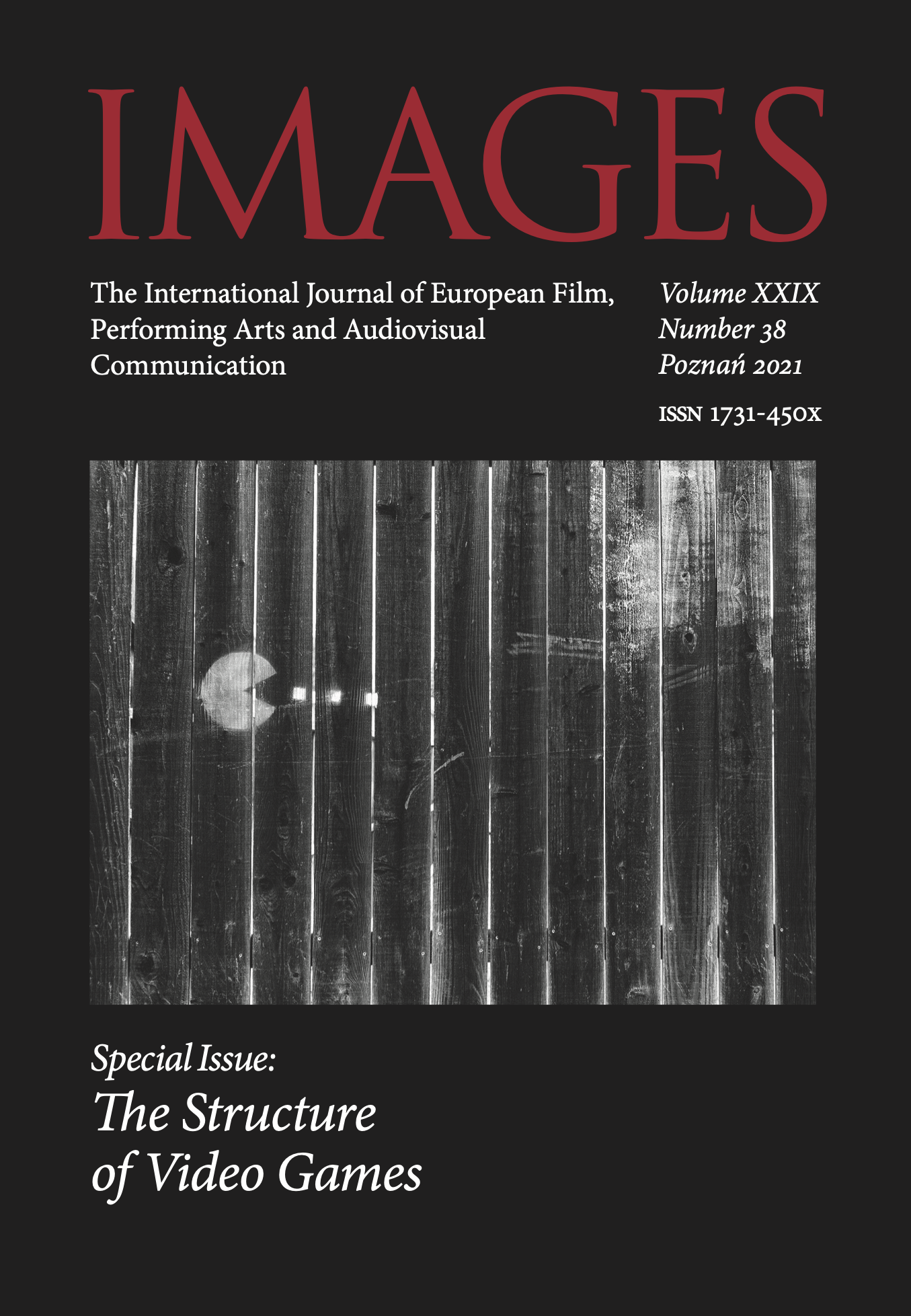Story beats in videogames as value-driven choice-based unit operations
Story beats in videogames as value-driven choice-based unit operations
Author(s): Michał Mochocki, Raine KoskimaaSubject(s): Language and Literature Studies, Fine Arts / Performing Arts
Published by: Uniwersytet im. Adama Mickiewicza w Poznaniu
Keywords: transmedia; narrative; beat; narratology; character; videogames; game studies;
Summary/Abstract: We present a framework of story beats, defined as microunits of dramatic action, as a tool for the ludonarrative analysis of videogames. First, we explain the Goal - Action - Reaction - Outcome model of the story beat. Then, we present six types of story beats, Action, Interaction, Inaction, Mental, Emotion, and Sensory, providing videogame examples for each category. In the second half of the paper, we contextualise this framework in the classic game studies theory of videogame narrative and player action: unit operations, gamic action, anatomy of choice, and game design patterns, wrapping it up in the most recent trends in cognitive narratology. Ultimately, we present the story beat as a ludonarrative unit, working simultaneously as a ‘unit operation’ in the study of games as systems, and as a microunit of character action in narrative analysis. The conclusion outlines prospective directions for using story beats in formal, experiential, and cultural game research.Temporal issues related to digital games go beyond the strictly literary or film studies character of the description and implies technological and marketing issues. It can be outlined by referring to the concept of Andrzej Stoff, who analyzed the spatial dimension of the world of the novel (“delineating space”, “creating”, “functionalizing”, “valorising”). Relating these four detailed issues – constituting the basic subject of description, analysis and interpretation – to temporal aspects, it is appropriate to talk about measuring (conventionalizing, relativizing) time, thematizing, functionalizing and valorizing it. Taking into account the above categories, the most typical concretizations of temporal phenomena can be further defined: functional (classic chronometry, clock, server time, time of a running process), gameplay (real time, relativization, quest time, respawn time), thematic concretizations (e.g. retrospection as a compositional dominant of multimodal narratives) and marketing concretizations (commercialization of time).We present a framework of story beats, defined as microunits of dramatic action, as a tool for the ludonarrative analysis of videogames. First, we explain the Goal - Action - Reaction - Outcome model of the story beat. Then, we present six types of story beats, Action, Interaction, Inaction, Mental, Emotion, and Sensory, providing videogame examples for each category. In the second half of the paper, we contextualise this framework in the classic game studies theory of videogame narrative and player action: unit operations, gamic action, anatomy of choice, and game design patterns, wrapping it up in the most recent trends in cognitive narratology. Ultimately, we present the story beat as a ludonarrative unit, working simultaneously as a ‘unit operation’ in the study of games as systems, and as a microunit of character action in narrative analysis. The conclusion outlines prospective directions for using story beats in formal, experiential, and cultural game research.
Journal: Images. The International Journal of European Film, Performing Arts and Audiovisual Communication
- Issue Year: 29/2021
- Issue No: 38
- Page Range: 5-31
- Page Count: 27
- Language: English

